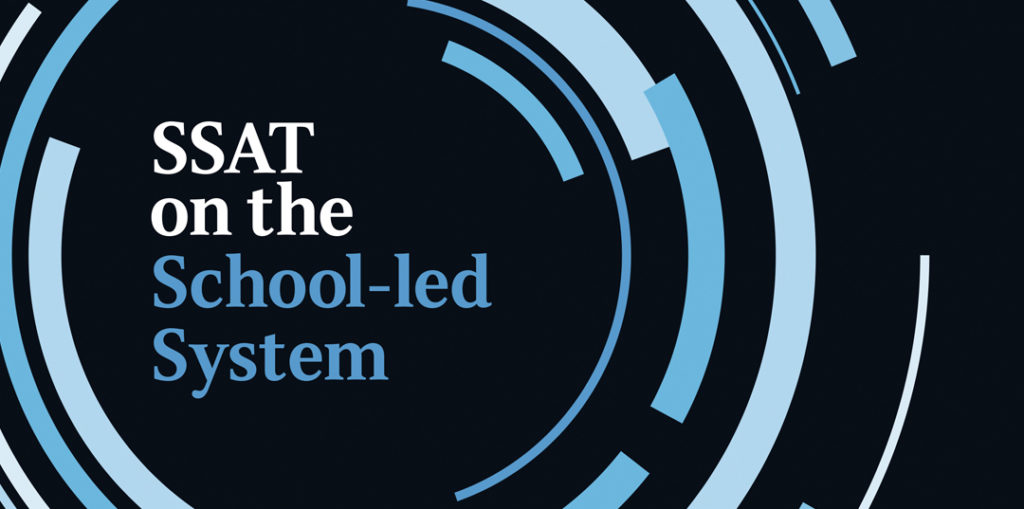
Reading time: 5 minutes. Relevant member publication: SSAT on the School-led System
Sue Williamson, SSAT Chief Executive, on facing three major challenges in school/MAT governance
Getting governance right at school and/or MAT level is important for the school system. In the current system, the main challenges are:
- To ensure that there is real local accountability.
- To determine the links between a MAT board and local governing bodies and whether or not there should be a local governing board.
- And, as is all too well known, to get the right people with the knowledge and skills to be effective trustees and governors.
Needed: a stronger, clearer middle tier
Local accountability would become clearer if there were a local plan in each area and broader national success criteria. This would require establishment of a clear middle tier in every part of the country that was strong enough and had a clear enough vision and brief to ensure real accountability and the commitment of every MAT, network or individual school. For example, if the local authority were to keep responsibility for admissions, schools should be confident that they were operating on a level playing field. Local collaboration, with agreed processes for young people with serious behavioural issues, should ensure that there are no dropouts from the system and no school becomes a sink school.
This framework would also give school governors an agenda to review the progress being made in their school. As the system progresses, there needs to be collaboration between governors from different governing boards.
As the system progresses, there needs to be collaboration between governors from different governing boards
Recruiting trustees and governors
Attracting high quality, skilled people to the role of trustee or governor is a major current concern. Even highly experienced school leaders may struggle to keep up with all the new initiatives that place demands on a governor. Understanding the new progress measures, for example, requires time for training and embedding understanding for all governors. Governors and trustees need specialist knowledge in order to provide challenge to the CEO/headteacher.
Boards need people with expertise in education, finance, legal and business matters, as well as local knowledge, to provide the right challenge to the chief executive/headteacher. The time demands – even when meetings are held in the evenings – are so significant that it can be impossible for a person in full-time employment, or with child care or other care arrangements, to commit.
Boards also need people with those specialist skills and local knowledge from a variety of backgrounds and ages. And it is essential that all governors/trustees understand the context within which the schools operate. This includes understanding the economic and social challenges of the region/locality and the school environment.
Local knowledge and commitment to the locality are essential in determining each school’s success criteria. Every school needs local employers to support work experience and careers guidance, and every school needs to understand the needs of those employers: this knowledge is essential in designing the curriculum.
Trustees and governors need the expertise to be able to hold the chief executive/headteacher to account. There have been a number of high profile cases where the senior person has lost their job because of malpractice. Clearly they had been able to do things that went unchallenged by trustees/governors, at least for some period of time. An individual school has a considerable budget, but as MATs grow the group might have a budget of £50 million plus. This is a big business in any terms and the role of trustees is critical. The recruitment of trustees is going to be an important factor in the success of the system as we move forward.
Who recruits trustees?
Who is responsible for the recruitment of trustees to any MAT? In theory, it is the members, but Michael Pain, chief executive of Forum Education, thinks that there should be more openness about who they are and the experiences they bring. Often it is the chief executive who invites people he or she has worked with or whose work in a particular field they are familiar with. This can make for a compliant board. If the system goes ahead with the development of MATs, certainly with the larger MATs, I think we have to consider advertising the positions and stressing the skill set required. We must stop the practice of only appointing ‘mates’, as Warwick Mansell tweeted in March 2017: ‘How are academy trustees appointed? Anything to stop you as a prospective CEO appointing your mates, then getting them to pay what you want?’
One way of achieving this may be a clearer separation between members and trustees; and greater clarification on their respective roles and responsibilities. The DfE’s current model articles stress that only one member can also be appointed a trustee (usually the chair), although you can have complete separation.
However, partly because the MAT system grew so quickly, many early MATs retain old articles allowing for several individuals to be both members and trustees – which blurs the lines of responsibility and can lead to a lack of robust accountability. The DfE must quickly work with MATs to incentivise proper separation between these two layers of governance; and should make clear what the role of each layer is.
It should be the job of the middle tier to ensure that MAT members are appropriate, trustworthy, community-minded individuals. Trustee appointments should be made transparently by the members and must be based on the skills needed by the board, to: ensure good educational outcomes; maintain financial health; and provide rigorous challenge and support to the executive.
Role of the chair
Equally critical is the role of the chair and the relationship between the chair and the chief executive. Complete candour between these two posts is essential at all times. An inexperienced chief executive might see the role of the chair as just chairing meetings, and that there is little need for regular meetings. Both parties need to be clear on how the relationship will work. The chair should be a valuable sounding board for the chief executive and ensure that the board receives a regular flow of news and information to provide effective governance.
It is a close working relationship and a critical one, and while continuity is important, I believe that the position of chair should be time-limited. I think a five-year maximum is a reasonable time to give continuity and ensure that the relationship between CEO and chair does not become too friendly.
I think a five-year maximum term for the chair is a reasonable time to give continuity and ensure that the relationship between CEO and chair does not become too friendly
One of the roles of the chair must be to ensure that there are a number of trustees/governors who could succeed to that position. The experienced chair could then be used in other MATs, particularly failing or new MATs, and/or provide training and mentoring services.
Strong trustee boards of MATs should be able to hold a chief executive to account, develop a strategic plan including growth strategy, and debate with a regional schools commissioner on the MAT’s performance. It should not be for a RSC to remove school(s) from a MAT – if things are not working there needs to be a conversation and a way forward agreed. Only in very exceptional circumstances should a school be forcibly removed and, if this happens, it probably should mean that the trust is no longer suitable to run any school.
Local governance
In developing a MAT, careful consideration needs to be given to the local governance arrangements. AET, for example, no longer has local governing bodies. This may be a model that others might follow, but there is the question of local representation.
If a MAT is locally based, I think a good case can be made for one board that truly looks at the issues from a one-community perspective. A local area partnership could have a representative from a MAT representing all the schools within the MAT – in a city this might make numbers on the local board more manageable. In a rural area with a small number of schools, it is probably preferable to have representatives from all schools. However, the key issue for me is whether or not all schools should have a governing board, whether they are in a MAT or not. All schools within a MAT have equal value and their needs must be considered. Some MATs have a trustee of the board taking responsibility for a school, and not a governing board. This might make it easier to recruit high quality people – you do not need so many – but it may be considered as not adequately representing the local community.
Parents’ role
The role of parents and how they contribute is one issue that needs to be addressed – they are important stakeholders. The local area plan ensures that parents can be involved in the annual presentation of the plan and the outcomes of the previous year. This could be a very positive forum for parental voice – the danger, particularly at the beginning, is that this could be an opportunity for complaints. However, if the plan is truly addressing the needs of the locality and parents see progress being made, it could be the stimulus for even more ambitious plans.
CEO salaries
The final point to be addressed is the salary of a chief executive of a MAT, or indeed a headteacher of an individual school. There has been much negative media coverage about CEO salaries, and comments made about the differentials between a CEO and a teacher. Schools/MATs are in the public sector, but many commentators think the salaries being paid are more aligned with the private sector. The DfE has relied on trusts to have a pay policy and to administer performance reviews linked to salary. This is bound to create anomalies.
If the DfE has a view on the ceiling for a CEO’s salary they should be clear on this, and issue guidance. For example, it could take into account: the number of schools/students in the MAT; the number of outstanding schools in the MAT; turning a school from requires improvement to good; contribution to supporting other schools/MATs. This matter should be discussed openly and consensus reached – if consistency is required the ground rules should be specified for the system.
 Follow Sue Williamson on Twitter
Follow Sue Williamson on Twitter
